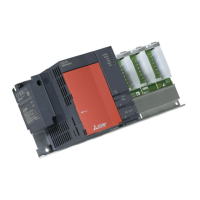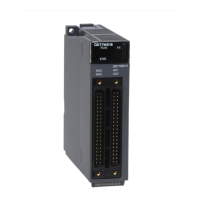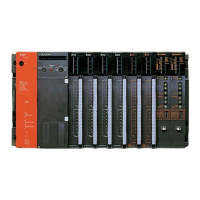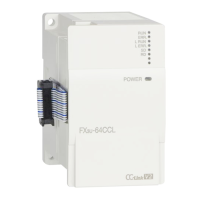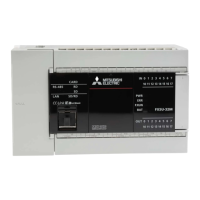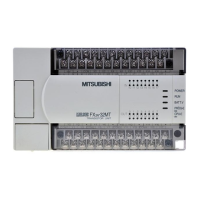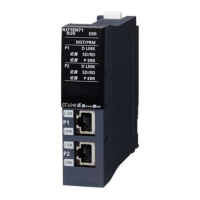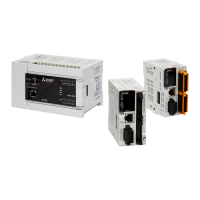409
CHAPTER 4 DEVICES
4
4.10 Pointer (P)
4.10.2 Common pointer
4.10.2 Common pointer
The common pointer is used to call subroutine programs from all programs that are being executed.
(1) Common pointer range
In the PLC system tab of the PLC parameter dialog box, set the start number for the common pointer.
The common pointer range is from the specified pointer number to P4095.
However, the pointer number that can be entered here is a number higher than the total points used for the local
pointer.
If a total of 400 points are used in three programs (100 points in each of Program A and Program B, and
200 points in Program C), for example, P400 and higher numbers can be set for the common pointer.
(2) Precautions
• The same pointer number cannot be used as a label. Doing so will result in a "Pointer configuration error"
(error code: 4021).
• If the total number of the local pointer points used in several programs exceeds the start number of the
common pointer, a "Pointer configuration error (error code: 4020) will occur.
The jump instructions are not capable of executing a jump to the common pointer in other programs.
Use the common pointer with subroutine call instructions only.
Program A
FEND
CALL P204
Program C
P204
P205
CALL P0
RET
RET
END
Program B
FEND
CALL P205
Label
Set the start number for
the common pointer.
Program A Program B Program C
Using P0 to P99
Using P0 to P99
Using
P0 to P199
100 points of
P0 to P99 occupied
100 points of
P0 to P99 occupied
Total of 400 points
are used.
200 points of
P0 to P199 occupied
P400 and higher numbers
can be used for the common pointer.
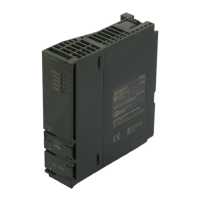
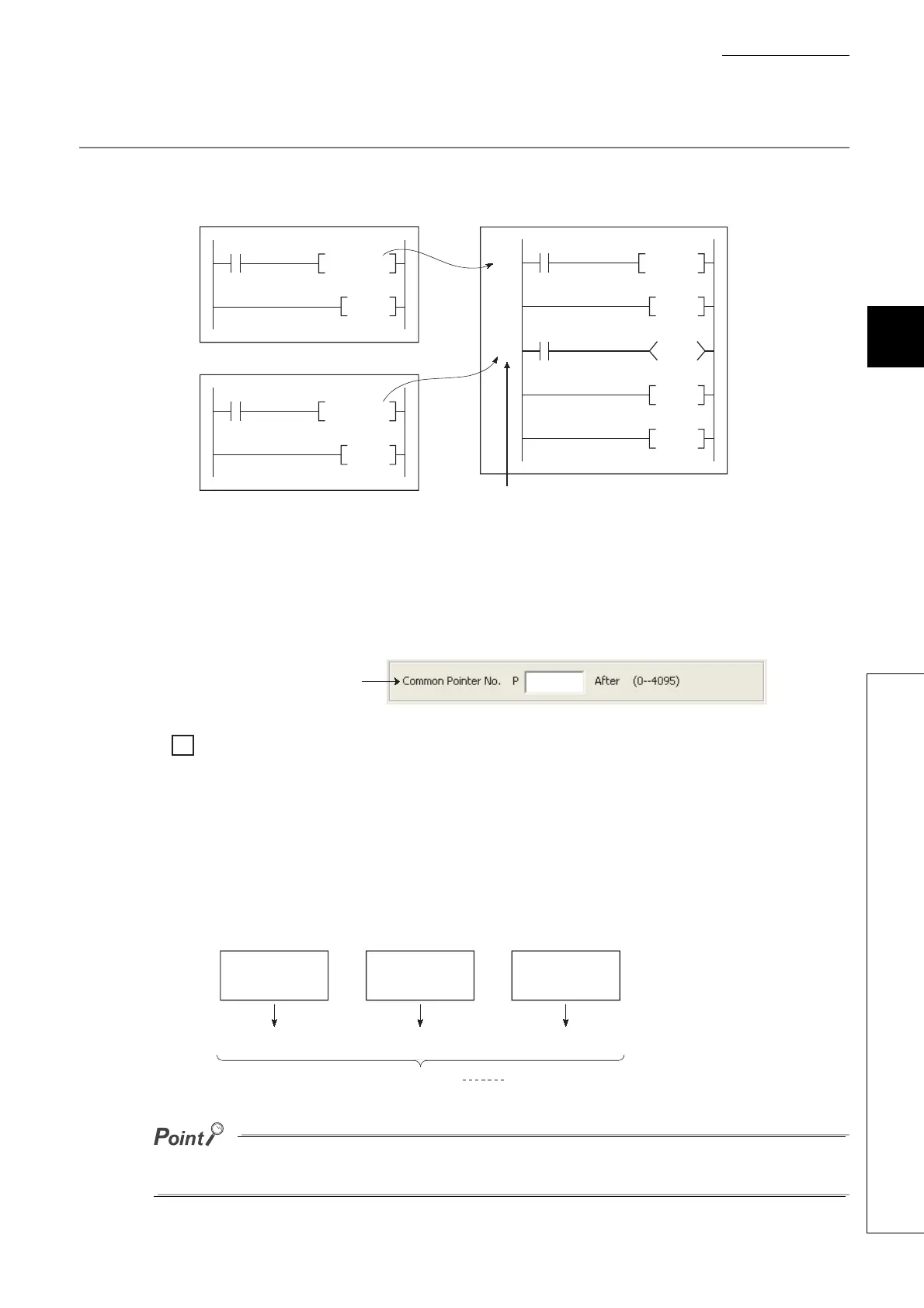